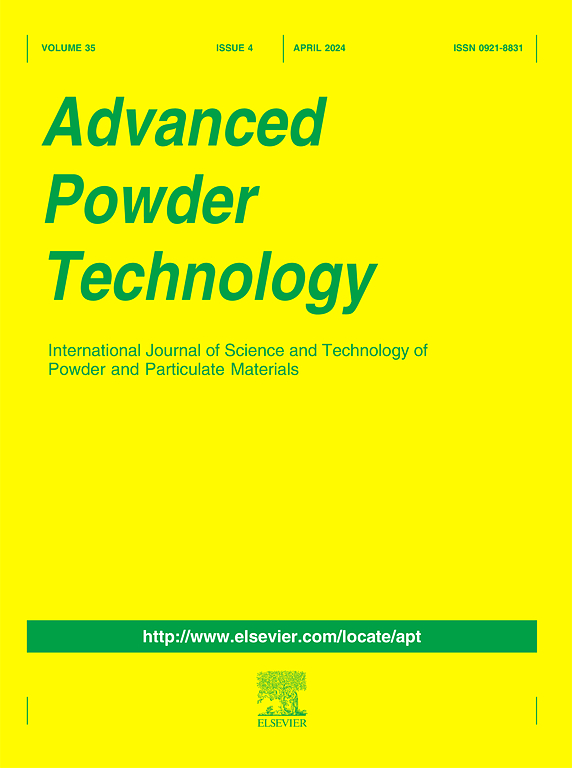Investigating the microstructure of chickpea and navy bean flour blends produced by roller milling: Insights from Fourier transform mid-infrared spectroscopy, scanning electron microscopy and synchrotron X-ray techniques
IF 4.2
2区 工程技术
Q2 ENGINEERING, CHEMICAL
引用次数: 0
Abstract
Flour blending ratios influence the micro- and molecular properties of flour, which, in turn, determine the essential structure-function relationships crucial for shaping ingredient functionality and creating customized end-products. Conventional laboratory-scale X-ray instruments, constrained by limited brightness and measurement time, present obstacles in investigating porosity, starch lamellar structure, and crystallinity in pulse flours. To address these challenges, this study uses synchrotron X-rays, laser diffraction, mid-infrared spectroscopy, and scanning electron microscopy to non-invasively examine micro and molecular changes in roller-milled chickpea and navy bean flour, accounting for flour blending ratios. The results illustrate a multimodal particle size distribution curve, with each flour blend displaying a distinctive morphology. Chickpea blends showed greater overall porosity than navy bean blends, while navy bean flour blends displayed slightly higher absorbance ratios. The macromolecular changes in flour properties as a result of blending unravel novel information that will be of immense use to food manufacturers.

研究辊碾法生产的鹰嘴豆和海军豆混合粉的微观结构:傅立叶变换中红外光谱、扫描电子显微镜和同步辐射 X 射线技术的启示
面粉的混合比例会影响面粉的微观和分子特性,而这些特性反过来又决定了基本的结构-功能关系,这对形成配料功能和创造定制的最终产品至关重要。传统实验室规模的 X 射线仪器受限于有限的亮度和测量时间,在研究脉冲面粉的孔隙率、淀粉层状结构和结晶度方面存在障碍。为了应对这些挑战,本研究使用同步辐射 X 射线、激光衍射、中红外光谱和扫描电子显微镜,在考虑面粉混合比例的情况下,对辊磨鹰嘴豆和海军豆面粉的微观和分子变化进行无损检测。结果显示了多模式粒度分布曲线,每种混合面粉都显示出独特的形态。蚕豆混合粉的整体孔隙率高于藏青豆混合粉,而藏青豆混合粉的吸水率略高。混合后面粉特性的大分子变化揭示了新的信息,对食品制造商大有裨益。
本文章由计算机程序翻译,如有差异,请以英文原文为准。
求助全文
约1分钟内获得全文
求助全文
来源期刊

Advanced Powder Technology
工程技术-工程:化工
CiteScore
9.50
自引率
7.70%
发文量
424
审稿时长
55 days
期刊介绍:
The aim of Advanced Powder Technology is to meet the demand for an international journal that integrates all aspects of science and technology research on powder and particulate materials. The journal fulfills this purpose by publishing original research papers, rapid communications, reviews, and translated articles by prominent researchers worldwide.
The editorial work of Advanced Powder Technology, which was founded as the International Journal of the Society of Powder Technology, Japan, is now shared by distinguished board members, who operate in a unique framework designed to respond to the increasing global demand for articles on not only powder and particles, but also on various materials produced from them.
Advanced Powder Technology covers various areas, but a discussion of powder and particles is required in articles. Topics include: Production of powder and particulate materials in gases and liquids(nanoparticles, fine ceramics, pharmaceuticals, novel functional materials, etc.); Aerosol and colloidal processing; Powder and particle characterization; Dynamics and phenomena; Calculation and simulation (CFD, DEM, Monte Carlo method, population balance, etc.); Measurement and control of powder processes; Particle modification; Comminution; Powder handling and operations (storage, transport, granulation, separation, fluidization, etc.)
 求助内容:
求助内容: 应助结果提醒方式:
应助结果提醒方式:


